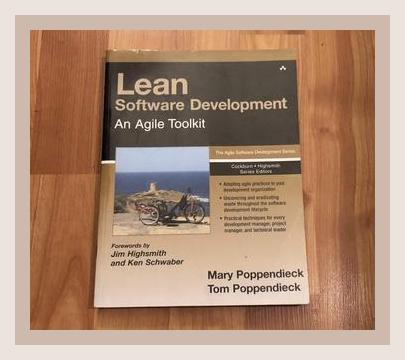Entrepreneurship and StartupsLean Startups
Introduction
“Lean Software Development: An Agile Toolkit” by Mary Poppendieck and Tom Poppendieck, published in 2003, adapts the principles of lean manufacturing to software development. Lean manufacturing, originally developed by Toyota, focuses on maximizing value while minimizing waste. The Poppendiecks translate these concepts into actionable strategies for the software industry, providing specific guidelines and practices for creating efficient and effective software development processes.
Principle 1: Eliminate Waste
Overview:
Waste in software development can take on many forms, such as unnecessary features, delays, handoffs, task switching, and defects. Eliminating waste optimizes the workflow and enhances productivity and quality.
Concrete Example:
A feature that no customer needs can be considered as waste. The authors describe a scenario where a team spent several months developing a sophisticated reporting feature that very few users actually utilized.
Actionable Advice:
– Techniques to Identify Waste:
Regularly review your backlog to ensure it only contains features that add value to the customer. Use techniques like value stream mapping to identify and remove non-value-adding activities.
Principle 2: Amplify Learning
Overview:
Lean development encourages learning through continuous feedback loops and iterative processes. This principle ensures the team adapts and improves based on insights gained during development.
Concrete Example:
The authors recount how the development team at a large financial institution regularly reviewed their iterations and adapted their processes based on feedback, leading to significantly better performance over time.
Actionable Advice:
– Techniques to Amplify Learning:
Implement regular iterations and frequent, small releases. Encourage a culture of experimentation, where hypotheses about improvements are tested, and results are measured.
Principle 3: Decide as Late as Possible
Overview:
In Lean Software Development, delaying decisions allows teams to make more information-driven choices, thereby reducing the risks associated with changes.
Concrete Example:
Mary and Tom highlight the benefits of this principle with a story about an airline reservation system where late decision-making allowed developers to incorporate the latest technology and thus build a more effective system.
Actionable Advice:
– Techniques to Implement Late Decision Making:
Use just-in-time (JIT) practices for both product and technical design decisions. Instead of locking in on a specific technology upfront, keep your options open as long as it does not hinder progress.
Principle 4: Deliver as Fast as Possible
Overview:
Quick delivery cycles help ensure that software meets current market demand, allowing teams to address customer needs promptly and effectively.
Concrete Example:
The book discusses a case where a team adopted short, weekly iterations, allowing them to deliver new functionality rapidly and gather feedback efficiently. This approach led to a more responsive and competitive product.
Actionable Advice:
– Techniques to Enable Fast Delivery:
Break down work into small, manageable user stories that can be completed and delivered in short cycles. Aim for continuous integration and maintain automated testing to ensure quality.
Principle 5: Empower the Team
Overview:
The principle of team empowerment emphasizes trust, autonomy, and responsibility. When teams are given the freedom to make decisions, they are more motivated and productive.
Concrete Example:
The authors detail how empowering a development team at a telecom company led to innovative solutions and a significant reduction in defects.
Actionable Advice:
– Techniques to Empower Teams:
Establish self-organizing teams and delegate decision-making authority as close to the work as possible. Encourage team ownership and accountability for their work.
Principle 6: Build Integrity In
Overview:
Building integrity into software involves ensuring that the system is reliable, maintainable, and reflects customer needs holistically rather than piecemeal solutions.
Concrete Example:
One example in the book mentions how a video game company implemented a thorough testing and continuous feedback process, ensuring both functional and non-functional requirements were met. This approach yielded a much higher quality product in the end.
Actionable Advice:
– Techniques to Build Integrity:
Implement continuous integration and automated testing practices. Ensure comprehensive testing – unit, integration, system, and acceptance testing – as part of your development process.
Principle 7: See the Whole
Overview:
Seeing the whole focuses on understanding the entire system and how different parts interact. It avoids sub-optimizing one part of the system at the expense of the whole.
Concrete Example:
A notable instance in the book describes a company that streamlined its entire development process, from concept to delivery, by adopting a holistic approach. This change dramatically improved the lead time and customer satisfaction.
Actionable Advice:
– Techniques to See the Whole:
Use systems thinking to analyze and improve your development process. Avoid silos and foster cross-functional collaboration to ensure every part of the system is aligned towards the common goal.
Practical Tools and Techniques
The authors provide a collection of practical tools and techniques derived from lean practices that can be applied to software development:
-
Value Stream Mapping:
Visualize the flow of information and materials to identify waste and bottlenecks. -
Set-Based Development:
Explore multiple solutions simultaneously before converging on the optimal one, delaying decisions to incorporate the best information available. -
Pull Systems:
Use Kanban boards to manage workflow, ensuring that work is pulled based on actual capacity rather than push systems that can lead to bottlenecks and inefficiencies. -
Queueing Theory:
Apply principles from queueing theory to manage work in progress and minimize wait times and delays within the development process. -
Cumulative Flow Diagrams:
Use these diagrams to track the flow of tasks through various stages, providing insights into work progress, bottlenecks, and areas for improvement.
Conclusion
“Lean Software Development” by Mary and Tom Poppendieck provides a crucial transition from the principles of lean manufacturing to agile software development. By focusing on eliminating waste, amplifying learning, deciding late, delivering fast, empowering the team, building integrity, and seeing the whole, software teams can significantly enhance their productivity and product quality. The detailed examples and actionable advice make it a practical guide for anyone looking to implement these lean principles in their development processes.
By following the specific actions outlined in this book, software developers and managers can create more efficient, effective, and adaptive development environments that consistently deliver value to customers.
